Fifty Years of 'Born to Run': How a 25-Year-Old Battled It All and Made "The Last Album on Earth"

November 1975. Born to Run 's final test. The album, released on August 25, is selling very well, but now it's time to showcase it live at London's demanding Hammersmith Odeon. This is the first time Bruce Springsteen plays in the city where his idols triumphed: The Beatles, The Rolling Stones, The Yardbirds, The Who... But Bruce is angry. A lot. As soon as he entered the venue for the sound check, still without an audience, he found flyers on each of the seats reading: "Bruce Springsteen, the next big thing!" A dramatic twist from his manager, Mike Appel. The aforementioned man, furious, tore up every poster he could. To the singer, this publicity seemed like "the kiss of death." “I'm so pissed off. It embarrasses me, and it offends my fans. That's not how it works. Play and shut up. I'm in the business of show business, not telling. You don't have to tell people anything. You show it to them and let them decide for themselves,” Springsteen recounts in his autobiography, referring to his feelings half a century ago.
It took 30 years to see that concert on video. Its perception, based on those pretentious flyers, was one of unease, of a recital with a bitter aftertaste; the public and critics, however, saw the live embodiment of an enormous album, the product of the Herculean work of a 25-year-old, eight songs that largely shape the personality of Bruce Springsteen today. But the trajectory of Born to Run was anything but pleasant. To celebrate this half-century (the album was released on August 25), Springsteen rescued and released last Friday a previously unreleased track (it appeared in bootleg editions) from those sessions, "Lonely Night in the Park."
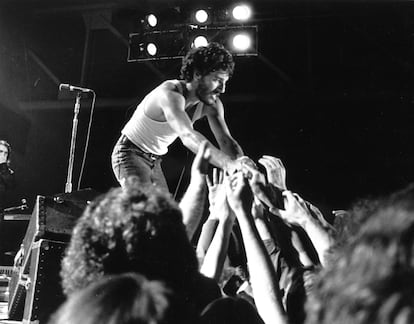
“Born to Run marks the beginning of the Bruce we all know. The first two albums were good and showed promise, but this one captures everything he promised. He breaks away from the influence of Bob Dylan and takes his own path. It's the most personal Springsteen and the foundation of the mainstream musician he still is,” Jorge Otero, leader of the Asturian group Stormy Mondays and the privileged person to share the microphone with Springsteen in 2007 at a New Jersey club, notes for this report. Otero was playing with Joe Grushecky, and Bruce, a friend of the latter, came on stage.
Otero points out where Springsteen had come from before Born to Run: two albums with good reviews but poor sales, Greetings from Asbury Park, NJ and The Wild, The Innocent & The E Street Shuffle, both from 1973. The record company (Columbia Records) demanded numbers, money, thousands of copies flying off the shelves. He had an ultimatum on the table. “If the next album flopped, our contract would be over, and in all likelihood I’d be sent back to the kids in the deepest pine forests of South Jersey,” the protagonist recounts in his memoirs, entitled precisely Born to Run .
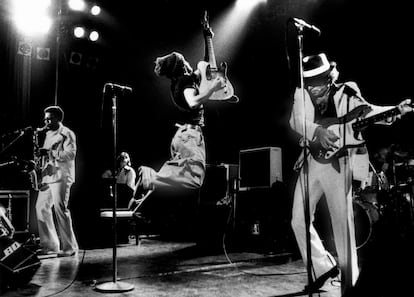
Bruce wrote a good portion of the lyrics for the album of his life between the sheets of his bed, during a few feverish days in a rental house in West Long Branch, New Jersey. He placed the record player next to the cot. All he had to do was reach over and change the vinyl. One after the other. Mainly Phil Spector productions and albums by Roy Orbison and Duane Eddy, a guitarist who collected hits in the late 1950s with a style that brought early rock and roll to the Old West. Bruce wanted to create a dramatic, dense rock work that would sound like "the last record on Earth," he defined.
Springsteen wrote pages of stories that told what a young American man in the mid-seventies truly felt. In addition to music, sex, and cars, he brought his texts to life with characters who were already maturing, already carrying some frustrations, the certainty that the American dream had its gloomy underside and that one had to get moving, if possible behind the wheel of a car, and seek support and hope, freedom and new sensations. These were difficult times for the working class (the toll of the Vietnam War, the oil crisis), and Bruce was going to tell them, without embellishment, that they had to fight, that resignation was not an option. He also exposed doubts, fears, and shadows. Through these stories, Bruce was getting to know himself. "When you look at the album closely, it reflects a lot of my life. It was what I was experiencing at that time," confesses the protagonist in the documentary Wings for Wheels: The Making of 'Born to Run'.
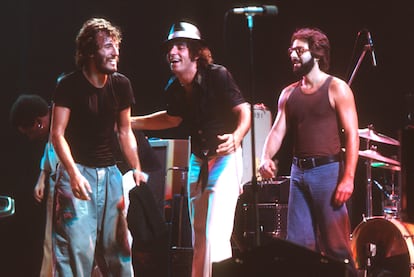
Singer Ramoncín was 19 years old when the album was released. Three years later, he would release his first full-length album, Ramoncín y WC?, which was released in 1978. “In Spain, Born to Run was a revelation for many kids like me, because the label decided to include the lyrics in Spanish in the album cover. And that was very important. Reading those stories, with those cinematic characters, everything told in such an honest way… It seemed like something new and magical to me,” the singer tells EL PAÍS. Springsteen set out to create an album as if sung by the prodigious voice of Roy Orbison, with the depth of Bob Dylan's lyrics and the colorful production of Phil Spector. “Nobody sings like Roy Orbison, it's impossible. But nobody would want Born to Run sung by anyone other than Springsteen,” Ramoncín points out.
Born to Run is also the album that cements the E Street Band's position. Many of them are still in the band. The recording process was rocky and lasted a year and a half. Six months just for the crown jewel, Born to Run , the song, packed with layers of instruments, bombastic, exuberant. Yet, its magic is evident when Springsteen plays it on guitar and harmonica, bare: it works, the shell can't be broken. This song was recorded with two instrumentalists who later (oh my God) left the E Street Band: drummer Ernest Carter and organist David Sancious, replaced by Max Weinberg and Roy Bittan, still in the group today.
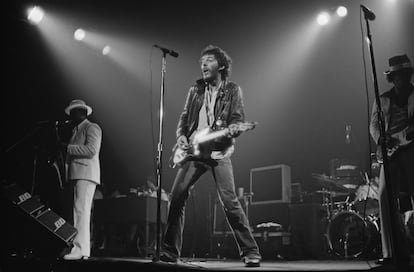
Springsteen kept changing the lyrics of " Born to Run" and adding instruments, but he wasn't happy with the result. And he still had to complete the rest of the album. Into the rescue came Jon Landau, a music critic and producer just starting out with albums like the incandescent MC5's debut , "Back in the USA . " Landau offered Springsteen perspective, channeled his flood of ideas, advised, and even acted as a therapist. That friendship, with its ups and downs, still endures five decades later: Landau soon became his manager , and he remains.
This isn't just a rock album. Springsteen crosses genres in an act of creative freedom: Meeting Across the River moves into nocturnal jazz; Jungleland, with Clarence Clemons ' evocative saxophone solo (fundamental in giving the repertoire substance), is almost a theatrical musical; the redemption story of Thunder Road serves as a compendium of what the listener will find; Tenth Avenue Freeze-Out floats in soul; She's the One sophisticates Bo Diddley's old tribal rhythm... Bruce composed almost all of them on the piano and they feature introductions unthinkable today, in this age of impatience.
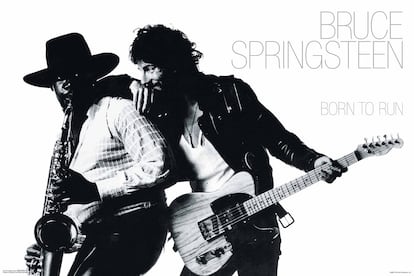
Screenwriter, author, and film director Jorge Arenillas visited Bruce Springsteen's home in New Jersey a few years ago. The creator of Born in the USA participated in the documentary The Second Act of Elliott Murphy, filmed by Arenillas and focused on the musician Elliott Murphy. Arenillas, who will publish a book about Springsteen's live performances in 2026, has attended 50 of the New Jersey native's concerts. “I've been able to listen to Born to Run live in its entirety from start to finish on a couple of occasions, and it's like watching Springsteen's Sistine Chapel being painted in front of you. The first of those times was at the now-defunct Giants Stadium in New Jersey, and as those songs played, I realized that the lyrics spoke to those 50,000 spectators. They didn't just sing the choruses: they knew who the characters in those stories were: Scooter, Big Man, The Magic Rat, Terry, Wendy, Mary... In a way, they were their neighbors, their fellow countrymen. They'd been with them for many years, and meeting them again was like feeling a breeze from their youth,” he explains.
Has Born to Run stood the test of time? Two answers to this question: on the 2024 tour, Springsteen performed six of the album's eight tracks. And the second, answered by the Asturian who played with the lead singer, Jorge Otero: “A few months ago, my 11-year-old son heard the song Born to Run and was amazed. The next day he said, 'Play it again, Dad.' I think that's the best proof that it has stood the test of time.”
Needless to say, Born to Run was a number one bestseller in 1975 and definitively launched its author's career. To this day…
EL PAÍS
